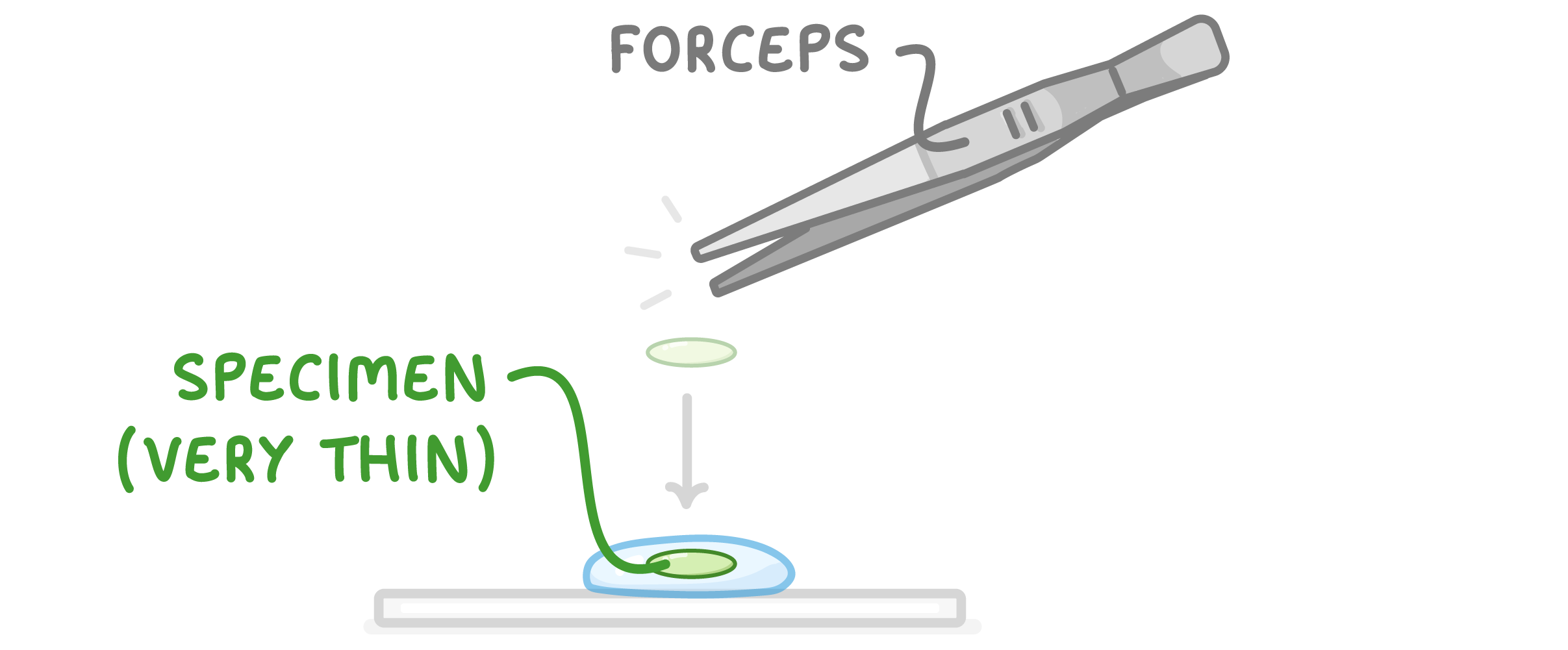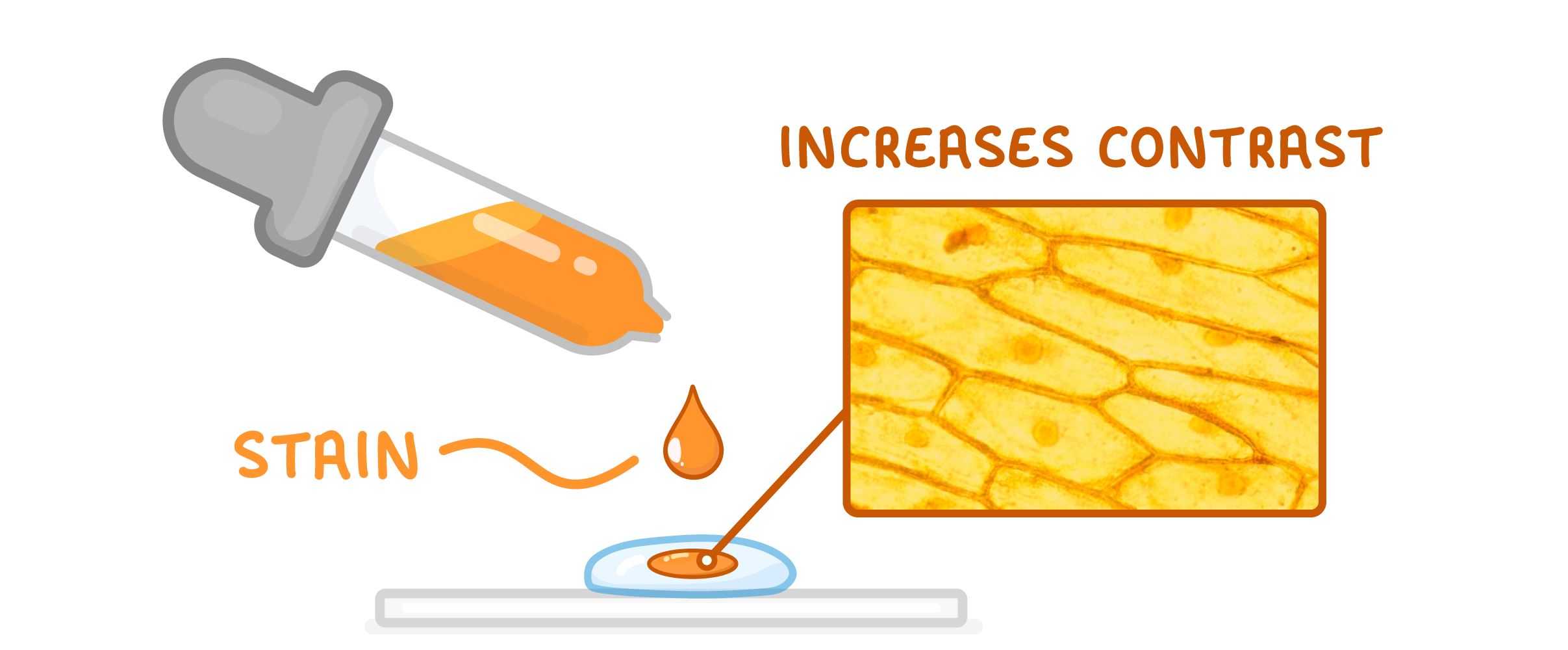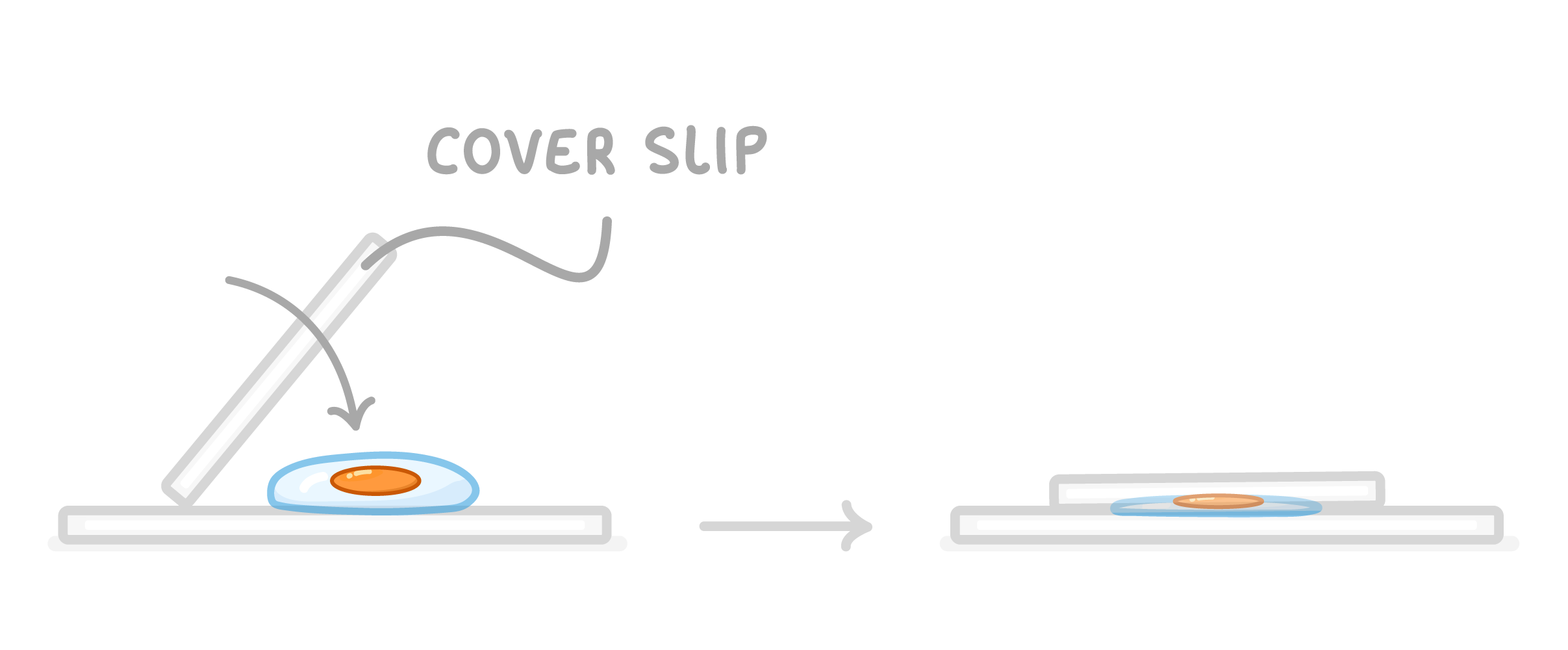Light Microscopes
This lesson covers:
- How a light microscope works
- How to prepare and view a microscope sample
- The rules for biological drawings
Microscopes 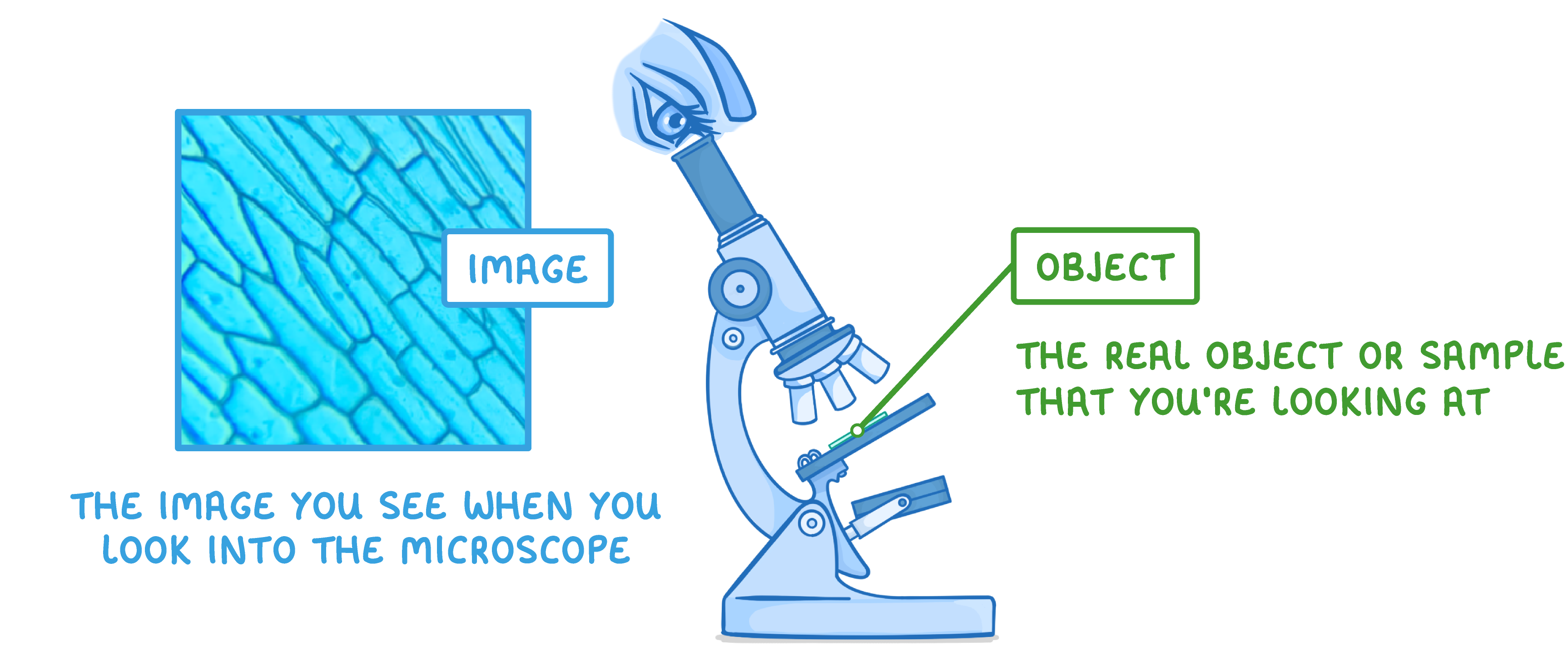 Biologists use microscopes to magnify cells and investigate their structures. The first type of microscope to be developed was the light (or optical) microscope. They work by creating an image that is much larger than the real object. |
Light microscopes have a lower resolution and magnification compared to other microscopes:
|
Sample preparation To look at a specimen under a light microscope, you need to place the sample onto a microscope slide. Many samples are prepared using a method known as a wet (or temporary) mount. The steps for preparing a wet mount are described below. |

|
Differential staining (using more than one chemical stain) can also be used to distinguish between cells or organelles. Other methods for sample preparation include:
|
Using a light microscope Once a specimen is prepared, it is ready to be viewed using a light microscope. Steps for viewing a microscope slide:
|
Biological drawings Biological drawings are used to record observations when looking at specimens. The diagram below shows an example of a light micrograph and its biological drawing.
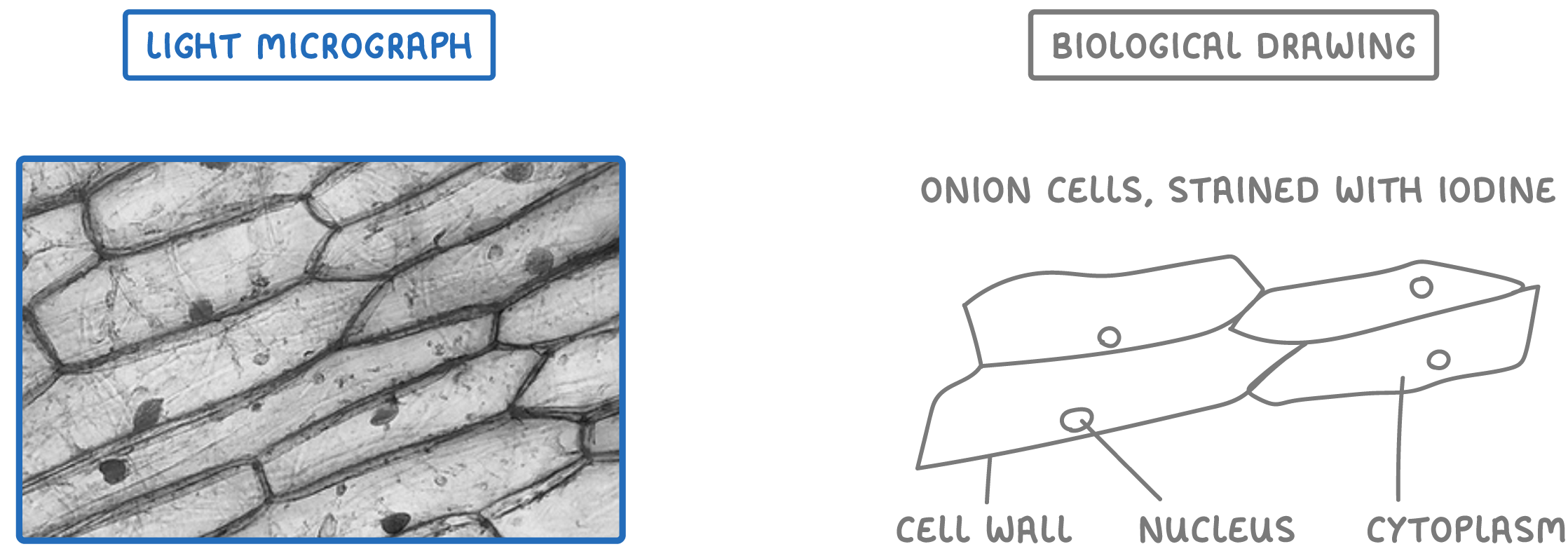 |
Biological drawings should not:
Biological drawings should:
|
